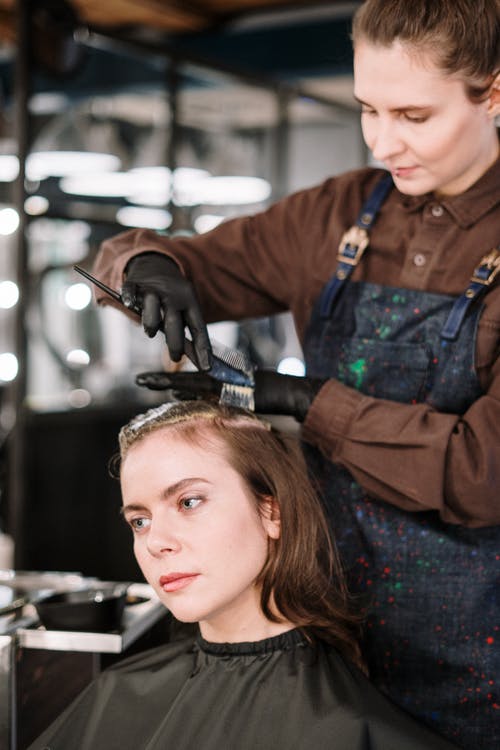
When the health of your hair is not at its best, every day is a bad hair day. Your mane may no longer take to hairstyles like it used to and even when it does, it does not last so long. On top of which you may notice more breakage every time you wash or comb it.
So, let’s take a step back for a moment to ponder, how did you get here? Well, the answer may surprise you. Remember all the hair treatments and trendy styles you have been getting? Some of them might be behind your current hair woes.
Here is the inside scoop on some hair procedures you may want to re-evaluate.
Hair Dyes and Highlights
Your hair strands each have a cuticle which works as a protective layer covering the hair shaft. For hair dyes to change the color of your tresses, they need to penetrate these cuticles. To this end, hair colors are made with ammonia which alters the pH of your hair and weakens the cuticle. In essence, they break down your hair’s front line of defense leaving it vulnerable to damage.
Once the protective barrier is out of the way, peroxide kicks in to alter the color pigment of your hair. The change is a chemical process that involves the breaking of hair bonds. This step further weakens your already vulnerable hair. Moreover, peroxide has a drying effect which is why colored hair strands often appear dry and rough.
The combined actions of both ammonia and peroxide result in colossal damage. If you are trying to get your hair to become healthier, consider keeping your natural color for now. Alternatively, if your heart is set on going blonde or hot pink, you could try and mitigate the harm done using Argan oil.
Hair Relaxers
Kinky hair is hard enough to manage on its own without the added pressure of societal prejudices. It is often tough to comb and takes patience to coif or style in its natural state. These qualities are why hair relaxers are so popular especially among women of color.
The structure of your hair consists of bonds of amino acids that keep it strong as it grows. When chemical relaxers are applied to your hair, lye or calcium hydroxide breaks down its disulfide bonds to soften it. Given as bonds are responsible for strength, anytime they are broken, your hair gets weaker.
Further, calcium hydroxide is a dehydrating agent. Your scalp could become dry and flaky while your hair may lose luster. There are also more grievous health effects of relaxers such as endocrine disruption that are worth paying attention to.
Gluing Wigs
A discussion about protective styling would not be complete without the mention of wigs and weaves. Yet, unfortunately, instead of protecting your hair, gluing wigs on may be doing the opposite. When bonding glue comes in contact with your hair, it can:
- Burn off hair strands
- Cause drying and breakage
- Damage hair follicles
Hairline loss is also a common complaint attributed to bonding glue. It is akin to waxing; when the glue bonds your hair to the wig, any attempts to remove or reposition it yanks off some strands.
Hair Cleansing
Shampoos contain active agents that strip work to strip off dirt and accumulated product from your hair. However, it is also important that your hair maintains its natural oils so as not to become dry and brittle. Harsh shampoos and over-cleansing could therefore be the reason why your tresses are out of sorts. Sulfates have been flagged as the main culprits to avoid when shopping for shampoos.
Cleansing products also play a role in the pH levels of your hair. The recommended levels on the litmus scale are about 4 to 5. When you use products that destabilize this balance, it interferes with the chemistry and health of your hair. It may also provide an environment for the growth of fungus.
On choosing the right shampoo, aim for products gentle brands with healthy formulations like those from private label hair care manufacturers. Keep an eye out for alpha-hydroxy acids such as lactic acid that are great for balancing pH levels in hair. It would also be best to alternate between washes days to give your hair to regenerate its natural oils.
Heat Treatments
It takes the discipline of a monk to completely stay away from heat treatments. The truth is, they are a convenient way to style hair fast and the results are quite rewarding. That said, beneath those beautiful curls, your hair is groaning from all the frying.
Heat degrades the keratin layer of your hair which gives it tensile strength. In its absence, all treatments are much harsher on the hair. It is akin to rubbing salt on flayed skin. You may notice your mane becoming thinner with more split ends or increasing breakage.
Styling products with heat-protecting oils could help you avoid damage from heat procedures. Jojoba oil works quite well as a sealant to shield your hair shaft against direct heat contact. It is also delightfully light and non-greasy. Argan oil is highly recommended as well for both heat tools and UV ray protection.
Conclusion
Understanding what could be damaging your hair is an important diagnosis if you are to find a cure for the problem. It could also guide you in coming up with a more suitable hair regimen. With the right products and some commitment, your tresses should be back in their shiny glamorous ways in no time.